In this training, you will be empowered with the knowledge and skills needed to provide exceptional care to people whether you’re new to caregiving or looking to enhance your skills.
- Home
- About
- Courses
- Short Courses
- Services
- Jobs
- Contact Us
- Home
- About
- Courses
- Short Courses
- Services
- Jobs
- Contact Us
Healthcare Assistant Training + Clinical Internship
Time before the price increases:

Why You Should Take This Course
Caregiving Is One Of The Most In Demand Jobs In The World Today
The average salary of a caregiver in the US is ranging between $25,000 – $35,000 (N38,768,000 -N51,173,760.00).
With this training, you will have all the skills, knowledge and techniques that will make it super easy for you to get job. Guaranteed.
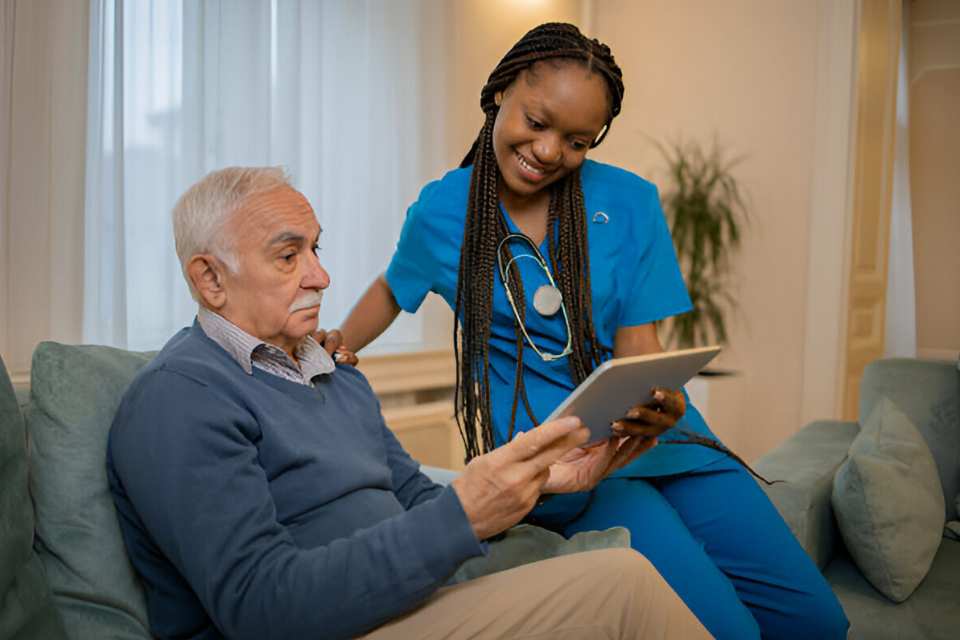
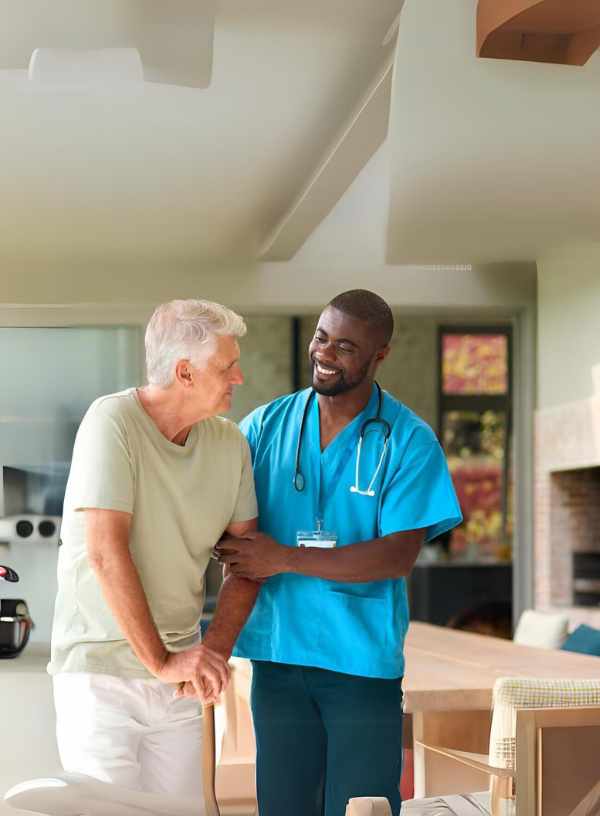
Training Benefits:
What You'll Learn
this course will open your eyes to the basic responsibilities that caregivers have with respect to the residents that you will be caring for.
This introduction lesson covers the entire range of employment options in the caregiving sector, including a review of the fundamental care standards and principles and an examination of positions such as nursing assistants, healthcare assistants, care support associates, and support workers.
This extensive course covers the standards, ethical and legal concerns that the healthcare industry faces, as stated in professional and regulatory guidelines (e.g. CQC, NHS). We’ll look at the Patient Bill of Rights, the Duty of Care to Show Empathy and Kindness, and Analyze Workplace Violence Prevention and Control Strategies. legislation pertaining to employment, labor, and standards for workers’ rights and harassment
Control of Infectious Diseases Procedure. Review the Standard Precautions and guidelines from the Occupational Safety and Health Administration (OSHA) and the Centers for Disease Control (CDC). Describe the isolation process, practice hygiene, and show how to wear personal protective equipment (PPE).
Analyze the consequences of extended periods of restricted physical activity, such as arterial restriction and muscle atrophy. We’ll walk through how to position, turn, ambulate, and transfer residents using various techniques (such as side lying, trichotomy, Trendelenberg, canes, crutches, wheelchairs, mechanical lifts, gait belts, etc.). Determine the function of devices that use continuous passive motion (CPM).
Here, we’ll identify the roles, structures, common health issues, and age-related changes of the nervous system (Parkinson’s disease, dementia/Alzheimer’s, multiple sclerosis, etc.), the sensory system (cataracts, glaucoma, neuropathy, etc.), the musculoskeletal system (arthritis, osteoporosis, fractures, etc.), and the circulatory system (angina, coronary disease, hypertension, etc.).
Recognizing and Reporting Emergency Situations (e.g Asphyxia, Stroke/TIA, Anaphylaxis, Seizure, Hemorrahage etc.). Demonstrate Basic Life Support (CPR) at Minimum Accepted Standard of Practice and Perform Standard First Aid.
Interpreting and communicating information, data, and observations while using appropriate vocabulary. Communicating Effectively with Residents. utilizing particular terminology, protocols, acronyms, and lexicons for certain task domains
The goal, contributing variables, and protocols for monitoring and documenting temperature, heart rate, respiration, blood pressure, height and weight, oxygen saturation, and other parameters will all be covered in this course.
In this lesson, we’ll examine procedures for bathing residents/patients, provide skin care and report skin problems, perineal care, dressing and undressing etc. We’ll also examine the use of and care of prosthetic and orthotic devices.
Describe risk management practices in the context of healthcare, including how to implement emergency measures and adhere to hazardou labeling regulations. handling and getting rid of dangerous and contaminated materials in accordance with guidelines and protocols. We’ll go over how to administer care while staying within the bounds of our scope of practice and how to use oxygen delivery devices safely and correctly.
determining the best dietary requirements and alternate feeding techniques for the inhabitants. Analyze therapeutic diets with feeding apparatuses. Nutritional data, such as meal %, intake, and output, should be measured and recorded. We’ll look at nutritional issues connected to age-related issues (such diminished taste perception and denture problems), situational factors (like depression and dysphagia), and components of care provided by nursing assistants (like sociability and comfort foods). Determine the medical, cultural, religious, and personal factors influencing dietary variations.
Ounces and milliliters of fluid intake and output should be measured, computed, and recorded. Help with other elimination techniques (e.g. ostomy, urostomy, Foley catheter). Help residents use the restroom, and tend to any incontinent or vomiting residents or patients.
Determine whether restraint methods are ethically and legally acceptable. Examine alternatives to restraints (such as mobility alarms and protective door devices). Keep an eye on and report on the patient’s or resident’s status while wearing protection equipment.
Establish the goal and protocol for sump drains, gravity, and the placement and care of residents or patients receiving tube feedings. Analyze the consequences of incorrect placement and surgical gravity. Determine and document intake and outflow.
Establish the goal and protocol for using compression hose, binders, support, and anti-embolism. Report the patient’s or resident’s condition, observations, and reaction to dressings, bandages, and binders.
Determine the goal and process for using cold therapy (such as an ice bag, cooling blanket, or soak heat pack) and heat therapy (such as compress, soak heat pack, KPad, or sitz bath). Observe the rules and guidelines about the proper temperature range for applying heat and cold treatments.
Describe the process for accepting, moving, and releasing a patient or resident. As per the facility rules, keep resident or patient belongings and personal items safe.
Decide on the goal and process for collecting, labeling, and submitting samples for analysis in accordance with standard operating procedures (e.g., sputum, feces, urine, blood) and diagnostic testing (e.g., clean catch, sterile, culture and sensitivity, 24-hour).
Establish the goal and process for helping with postoperative care in accordance with protocol (e.g., ID band, airway maintenance, N/V) and preoperative care in accordance with protocol (e.g., NPO orders, ID band, surgery checklist).
Describe and put into practice the Patient’s Bill of Rights, which includes the freedom to choose and be independent. In addition to facilitating scheduled leisure activities that promote social bonds in reaching optimal wellness, assist family and significant others as a source and resource of social and emotional support.
The special needs and developmental tasks that patients face throughout their lives will be covered in this course. Ascertain why and how to respond to the needs and behaviors of people suffering from dementia, Alzheimer’s disease, and other cognitive or sensory impairments (such as cognitive impairments, anger, depression, or unresponsiveness). What unique requirements do residents with a mental health diagnosis have?
Describe the phases of the dying process, grief, and death. Describe hospice’s function in providing end-of-life care. Help with the patient’s or resident’s final care while providing the family with support and attention to their physical, spiritual, and cultural requirements. Establish the goal and protocol for postmortem care (e.g., placement, deference, attire, and organ donation).
Final Evaluation of Training
What You'll Learn
this course will open your eyes to the basic responsibilities that caregivers have with respect to the residents that you will be caring for.
This encompasses the entitlements and privileges associated with living in a particular property. These rights typically include the right to occupy the premises, enjoy its amenities, and use the space for personal purposes within legal and contractual boundaries. Such rights are often delineated in lease agreements or property deeds, outlining the responsibilities of both tenants and property owners.
As a caregiver, it’s important to remember that while communication with the elderly may be more challenging, it’s worth the effort. By maintaining a close and loving connection with an elderly person, you honor your relationship, and help to improve that person’s quality of life.
Being able to cope with the strains and stresses of being a caregiver is part of the art of caregiving. In order to remain healthy so that we can continue to be “good” caregivers we must be able to see our own limitations and learn to care for ourselves as well as others. Equally important, is to make an effort to recognize the signs of caregiver burnout
As caregivers, it’s your job to do everything you can to prevent and report abuse, neglect or exploitation if you have reasonable grounds to believe that has occurred at your facility. The key is to be “reasonable” and don’t assume anything.
One of the most important aspects of environmental safety is infection control. Each assisted living home facility must have an infection-control committee to write and approve policies and procedures and to monitor the infection-control program. As a caregiver you have a responsibility to understand and to follow your facility infection control policies and procedures
As a caregiver you are responsible for record keeping and documentation keeping. As such, you must keep any and all resident records confidential and in a safe and secure area. You are not permitted to release confidential resident information to any
unauthorized parties.
A service plan is a written agreement between the resident and his/her doctor that is designed to help the resident manage their health day-to-day. States vary as to what is required in a service or care plan.
Nutrition, hydration, exercise, and food service are integral components of a healthy lifestyle. Proper nutrition provides essential nutrients for bodily functions and overall well-being, promoting growth, development, and disease prevention. Hydration is key to maintaining bodily functions, aiding in digestion, circulation, and temperature regulation. Regular exercise contributes to physical fitness, strengthens muscles and bones, and improves mental health.
Medication administration is generally defined as “the direct application of a medication or treatment to the body of a resident.” Residents who need medication administration cannot deliver their medications into their body.
A calendar of activities (COA) should be prepared at least once a week in advance from the date the activity is provided. It should also be posted and should reflect any substitutions in activities provided. The COA should be maintained on the facility premises for a specified amount of time, generally 12 months after the last scheduled activity.
Fire, safety, and emergency procedures are paramount in any environment to ensure the well-being of individuals and the protection of property. Comprehensive fire safety measures, including fire alarms, extinguishers, and evacuation plans, are essential to mitigate risks and respond effectively in case of a fire emergency.
Knowing how and why your body changes with age helps you to discourage alterations in cells, tissue, and organ function that slow you down. This knowledge will also help you take steps to stop the development of conditions such as diabetes, dementia, and eye disease that are more common with advancing age.
Activity for aging adults is vital to maintaining their health. As a caregiver it is your responsibility to not only assist residents with daily activities, but you should also record and/or document any resident ADLs.
Taking vital signs is a fundamental aspect of healthcare assessment, providing critical information about a person’s overall health and well-being. These essential signs include temperature, pulse rate, respiratory rate, and blood pressure.
Medication must be properly stored according to pharmacist recommendations and pay attention to expiration dates. You (the facility) should always have a drug reference guide on hand in the unfortunate event that a medication error occurs. The reference guide will provide you with the side effects and interactions.
Oral hygiene, grooming, and bathing are integral components of personal care routines that contribute to overall health and well-being.
Skin integrity refers to the overall health and condition of the skin. It encompasses factors such as its strength, resilience, and ability to function as a barrier against pathogens and environmental stressors. Maintaining skin integrity is crucial for overall health, as the skin serves as the body’s first line of defense against infection and injury.
Alzheimer’s disease is a chronic, progressive debilitating illness. At first the symptoms are mild and might include difficulty remembering names and recent events, showing poor judgment and having hard time learning new information. At this early stage the person often tries to deny their problems.
Sometimes it can be a challenge to engage these residents, even for just a few minutes. With group activities, it is rare that we have every resident on the same page at the same time. One current popular way to help those residents with dementia or Alzheimer’s is to employ “davenport” rooms or the more common name “lounge” rooms.
When we are considering activities within the care home environment there are a number of daily activities that as a caregiver you can implement to maximize functioning for dementia patients tend to change as the disease progresses.
As a caregiver you are likely to be faced with challenging behaviors on a regular basis. If you develop strong skills in managing these behaviors and in communicating effectively with residents, this will help you in dealing with difficult situations and provide better care for the residents in all aspects of your job, from helping with ADLs, to encouraging residents to take part in social activities in the home or in the community.
Caregivers need to be aware of the importance of social contact in the lives of residents, especially those unable to direct self-care, such as typically the case with residents suffering from dementia or Alzheimer’s disease
Some residents who have been ill or are recovering from an injury or surgery may need help with walking. The resident may have decreased muscle strength or a change in his center of gravity or posture. Some residents need help with ambulation because of a decrease in their sensory perception or impaired balance.
Training Details
you can enhance your professional and earning potential with our training session.
Day: Mon. Wed. & Fri.
Time: 10 AM - 1 PM
Duration: 3 Weeks + 4 Weeks Hospital Internship.
Days: Saturday & Sunday
Sat. Time: 10:00 AM - 2 PM
Sun. Time: 1PM - 5 PM
Duration: 4 Weeks + 4 Weeks Clinical Internship
Start Date: 22nd November 2025
Days: Monday, Wednesday & Friday
Time: 2 - 4PM
Duration: 3 Weeks + 4 Weeks Clinical Internship.
Start Date: 10th November 2025
SkillBoost Limited: Fonte House, 1 Temple Ejekwu Close, First Artillery Junction, Aba Road, Port Harcourt, Rivers State.
Training Start Date: 10th November 2025
For Direction: Call Tope on 07030163486
SkillBoost Limited: 4, Obe Street, Beside BOVAS Filling Station, New Bodija, Ibadan, Oyo State, Nigeria.
Training Start Date: 24th November 2025
For Direction, Call Olaide on 08100627249
Surfweb Digital Solutions: 321 Road, E Close, House 10, Festac Town, Lagos State Nigeria.
Training Start Date: Not accepting Students for now
For Direction: Call Tope on 08028973599
Skillboost Limited: Shop 21, Ayotayo Shopping Complex, 156 Lagos Road, Church Bus Stop, Ikorodu, Lagos, Nigeria.
Training Start Date: 24th November 2025
For Direction: Call Tope on 08028973599
Option 1: Training + Practical + Internship: N120,000
Option 2: Training + Practical Only: N100,000
Option 3: Internship Only: N60,000
Some of Our Team Members
Meet Your Instructors & Mentors
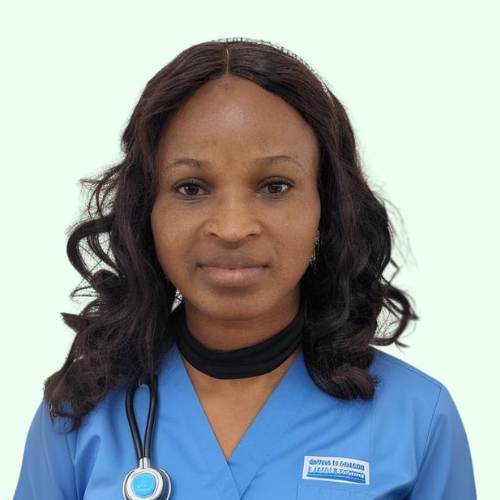
Esther Asuquo
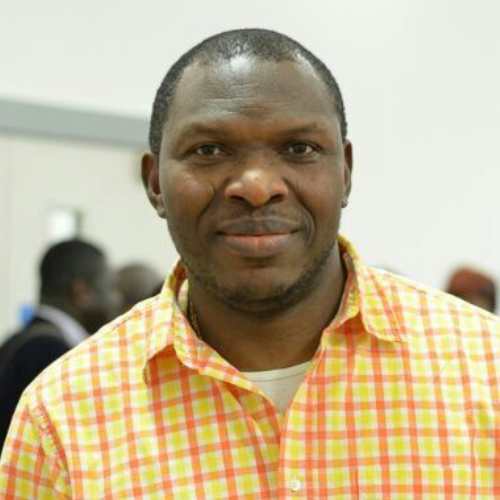
Anthony Thomas

Linda Opara

Adeniran Eniola
Testimonials
99% of our previous students rated us 5 stars.
Don’t take our word, just read what some of them have to say.

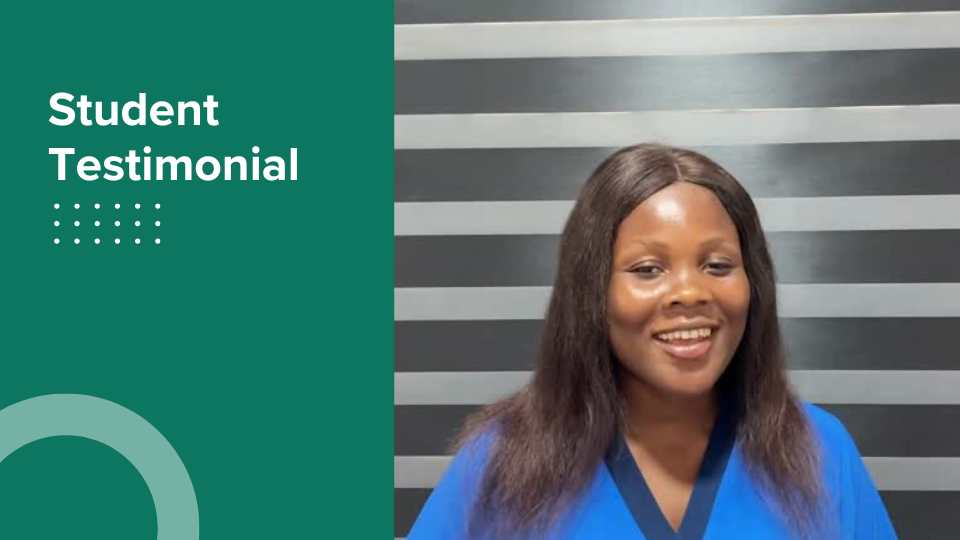
Frequently Asked Questions
A caregiver course is a type of training program that equips participants with the abilities and information needed to provide care for elderly, sick, children, or disabled persons. The training covers a wide range of topics, from fundamental caregiving abilities to advanced care methods.
A caregiver training can be beneficial for anyone interested in becoming a professional caregiver, family members looking to care for a loved one, or anyone want to improve their caregiving abilities.
Yes, our caregiver courses offer a certification upon successful completion. The certification can help in obtaining employment and is often a requirement for certain caregiving roles.
Opportunities in the US:
The U.S. Bureau of Labor Statistics (BLS) projects an increase of 25% for home health and personal care aides from 2021 to 2031, much faster than the average for all occupations.
Opportunities in Canada
Canada projects 25,000 new job openings for caregivers from 2022 to 2028, particularly in provinces like Ontario and British Columbia.
Pay Early Bird Fee of N70,000 Instead of N100,000 Now!
To REGISTER, Please Pay into SkillBoost Limited Account Number: 0058423529 (Unity Bank Plc)
